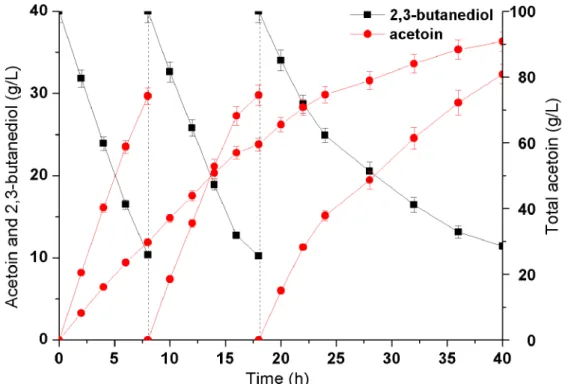Efficient whole-cell biocatalyst for acetoin production with NAD+ regeneration system through homologous co-expression of 2,3-butanediol dehydrogenase and NADH oxidase in engineered Bacillus subtilis.
Texto
Imagem




Documentos relacionados
O objetivo é refletir sobre as idéias centrais contidas no livro editado “Idéias para uma sociologia na questão ambiental no Brasil”, que é produto de uma pes- quisa com
binding site for piliated bacteria. Binding of whole cell piliated recombinant ETEC E. Whole cell binding was assessed using goat pAb to E. coli and alkaline phosphatase-
Thus, considering that the efficiency of utilization of ME by the whole body decreases as the level of ME intake increases, i.e., the whole body heat production increases in relation
The objective of this work was to study the inluence of some reaction conditions on the activity, selectivity and stability of copper chromite and Cu/Al 2 O 3 catalysts in
Otherwise, the cell process is similar to that used for crystalline Si solar cells and, in spite the efficiency of this type of cells is less than 2-3% in relation to crystalline
A Internet tem motivado o desenvolvimento do turismo, facilitou o acesso instantâneo e a distribuição de informação turística bem como o suporte e a
The samples of raw whole milk were subjected to gamma radiation from Co 60 in doses of 1, 2 and 3 kGy and the production of rancidity was studied through Nuclear Magnetic
• NaBH 4 /γ-Al 2 O 3 nanoparticles/H 2 O with CoCl 2 as catalyst are a potential source of hydrogen generation and this system can be applied to fuel cell applications due to its
